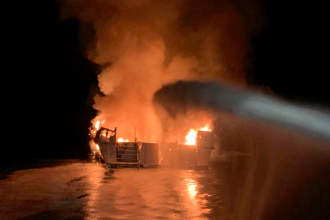This weekend, four tourist boats capsized in Guizhou province, claiming ten lives and leaving over seventy others hospitalized.
According to China’s state media, sudden strong winds capsized four boats carrying tourists, plunging 84 people into a river in Southwestern China on Sunday. But is nature truly to blame, or are we looking at yet another case of overlooked safety measures?
The incident occurred right at the tail end of China’s May Day holiday—a peak travel season. Following the incident, nearly 500 rescue workers mobilized to save them. According to media reports, 74 people had been rescued, adding that authorities sent 70 people to the hospital to be treated for “non-life-threatening conditions.”
Chinese President Xi Jinping has called for ‘all-out efforts’ in search and rescue operations. President Xi also called on authorities to enhance safety measures in order to curb the growing number of accidents at tourist attractions and major public places.
Just two months ago, eleven people lost their lives when a passenger boat collided with an industrial vessel in Hunan province. And let’s not forget the infamous Eastern Star disaster of 2015, where a cruise ship capsized on the Yangtze River, killing over 400 people.
Poor safety regulations, overcrowding, and a system that reacts rather than prevents.
China’s tourism industry is booming, but safety measures haven’t kept pace. There are often repeated failures in enforcing strict regulations, and every time disaster strikes, the response is the same—rescue efforts, condolences, and promises of reform.














